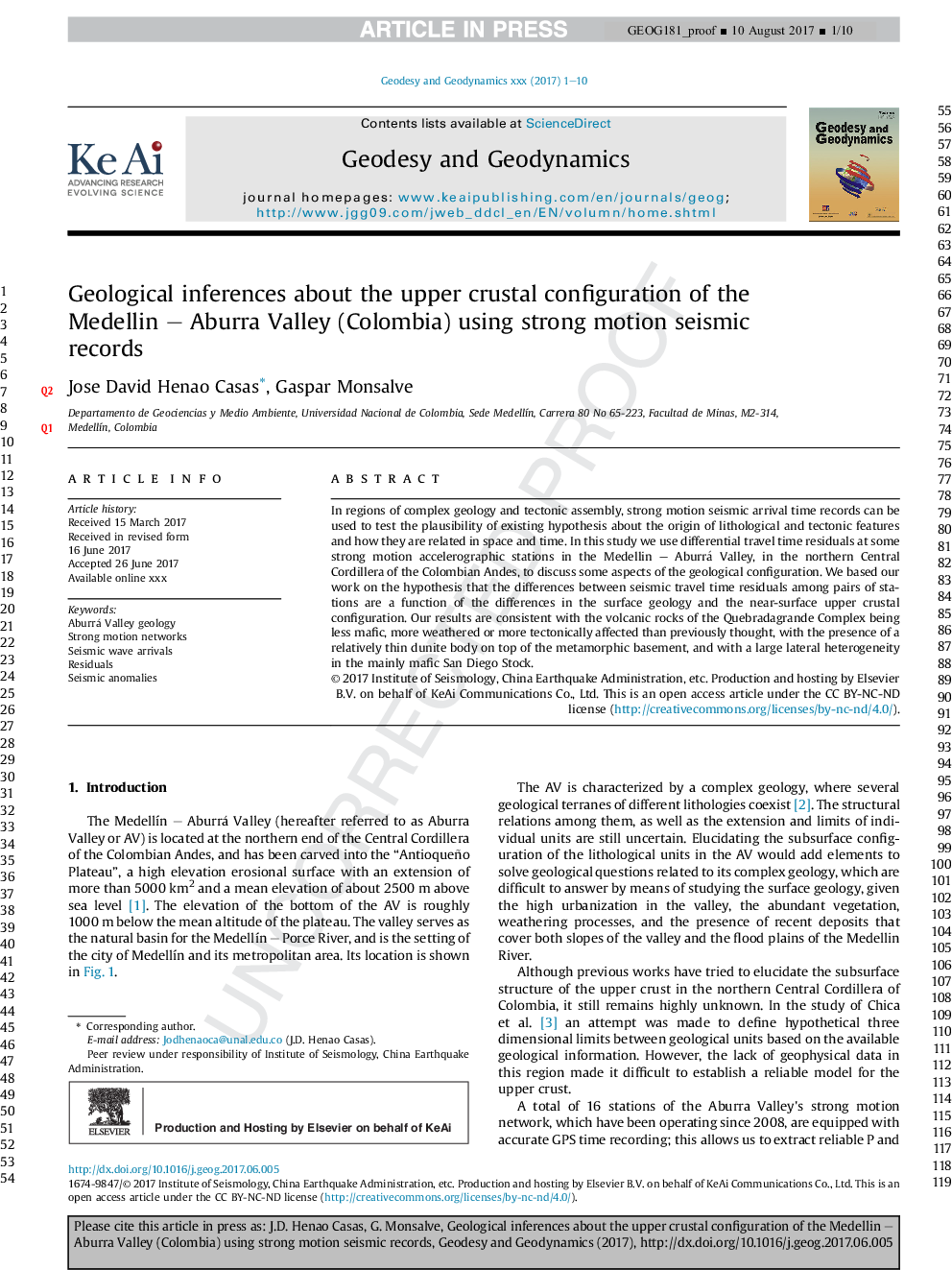| Article ID | Journal | Published Year | Pages | File Type |
|---|---|---|---|---|
| 8907878 | Geodesy and Geodynamics | 2018 | 10 Pages |
Abstract
In regions of complex geology and tectonic assembly, strong motion seismic arrival time records can be used to test the plausibility of existing hypothesis about the origin of lithological and tectonic features and how they are related in space and time. In this study we use differential travel time residuals at some strong motion accelerographic stations in the Medellin - Aburrá Valley, in the northern Central Cordillera of the Colombian Andes, to discuss some aspects of the geological configuration. We based our work on the hypothesis that the differences between seismic travel time residuals among pairs of stations are a function of the differences in the surface geology and the near-surface upper crustal configuration. Our results are consistent with the volcanic rocks of the Quebradagrande Complex being less mafic, more weathered or more tectonically affected than previously thought, with the presence of a relatively thin dunite body on top of the metamorphic basement, and with a large lateral heterogeneity in the mainly mafic San Diego Stock.
Keywords
Related Topics
Physical Sciences and Engineering
Earth and Planetary Sciences
Earth-Surface Processes
Authors
Jose David Henao Casas, Gaspar Monsalve,
